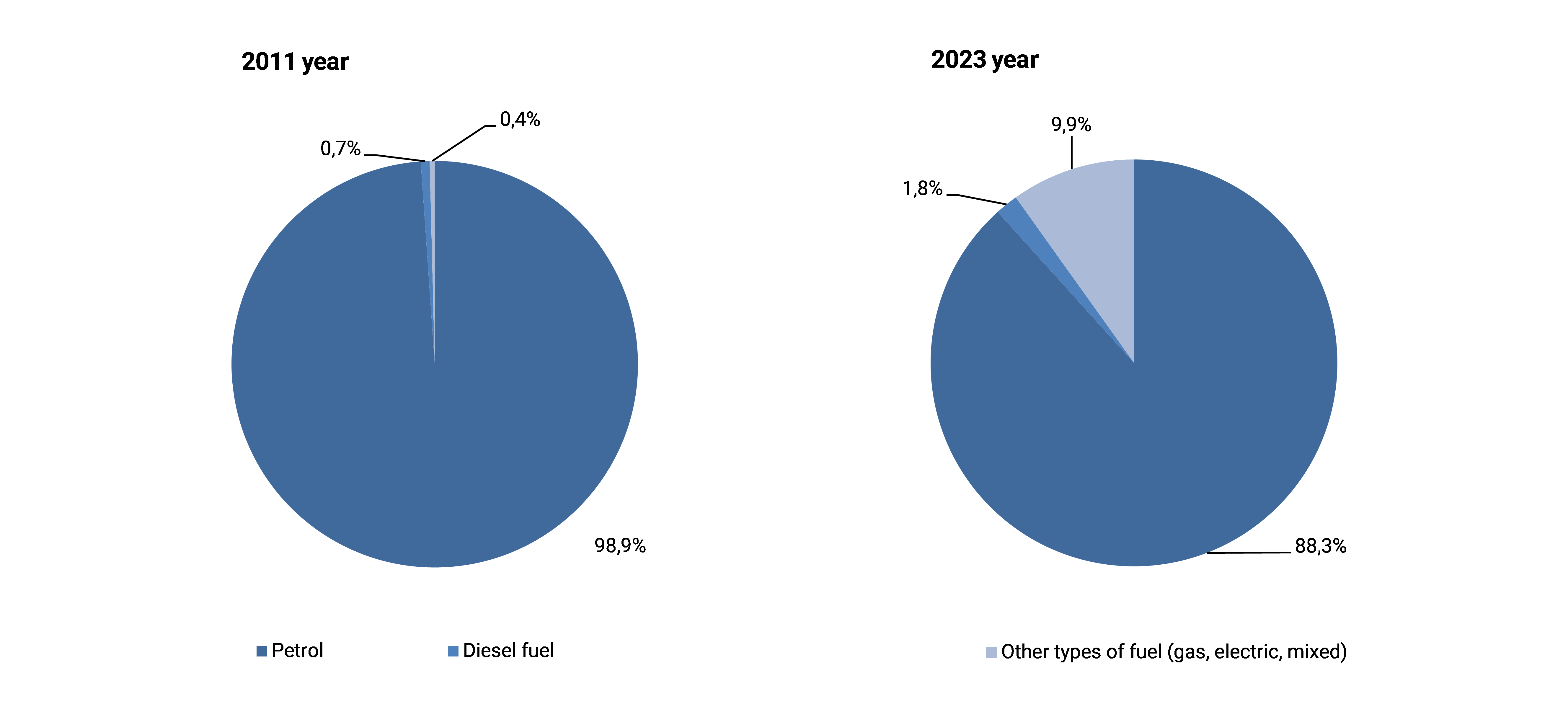Brief description:
This indicator determines the number of motor vehicles (passenger cars)in the country, by fuel type. A road motor vehicle other than a motorcycle intended for the carriage of passengers and having no more than nine seats (including the driver's seat). A vehicle is classified by the type of energy used in the engine. The main types include gasoline, diesel fuel, gas (liquefied petroleum gas and natural gas), electricity, biofuels, and other sources.
Methodology:
The indicator is in accordance with the «Procedure for the formation of statistical indicators of transport», approved by order of acting Chairman of the Committee on statistics of MNE of RK № 145 of 15 July 2016. The responsible state body for generating passenger data is the Bureau of National statistics of the Agency for Strategic planning and reforms of the Republic of Kazakhstan. Information is generated once a year based on the results of national statistical observations in the following forms: 1-TR (auto, electric) «Report on the work of automobile and urban electric transport», 2-transport «Report on the work of transport by type of message»
